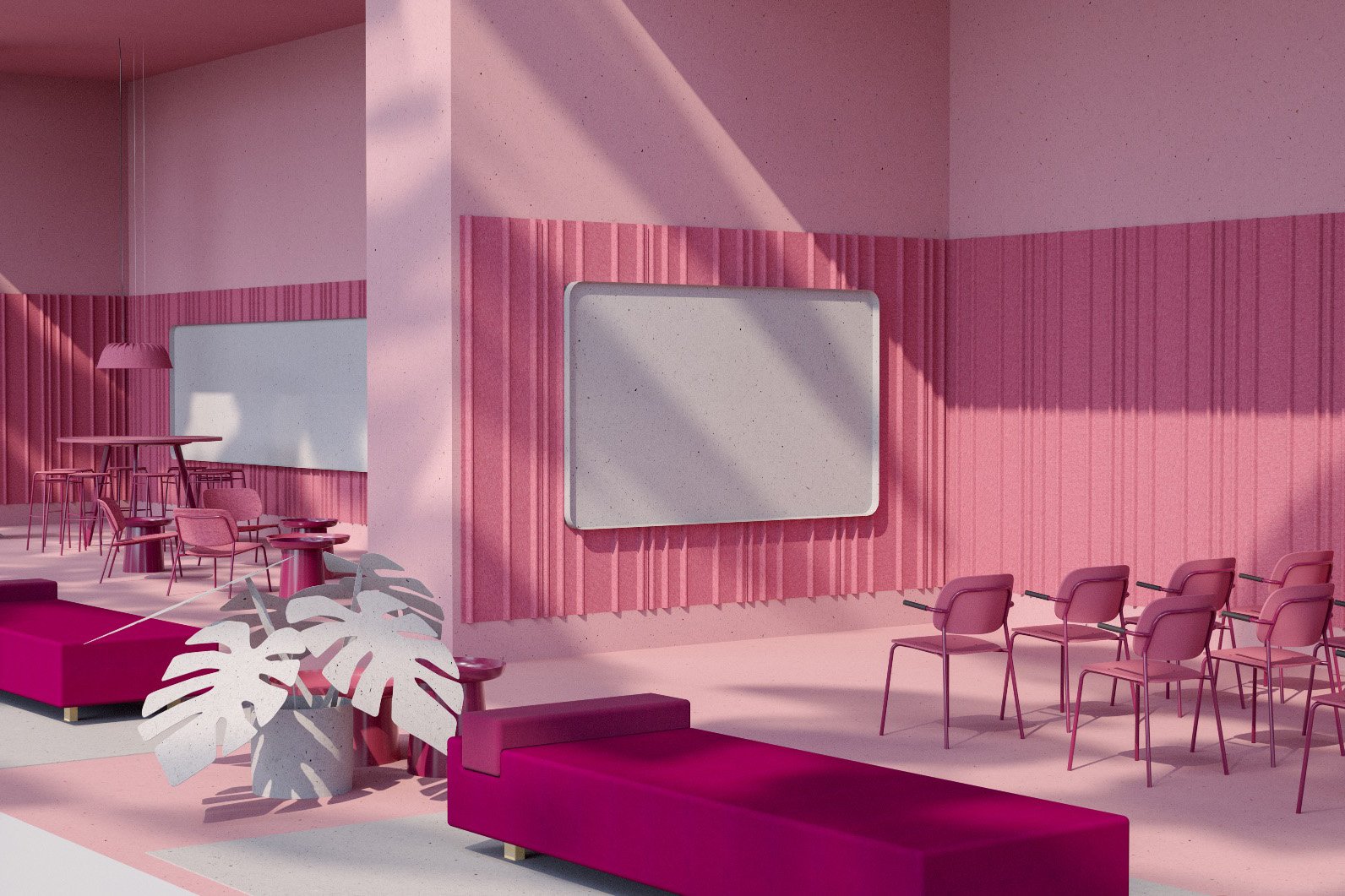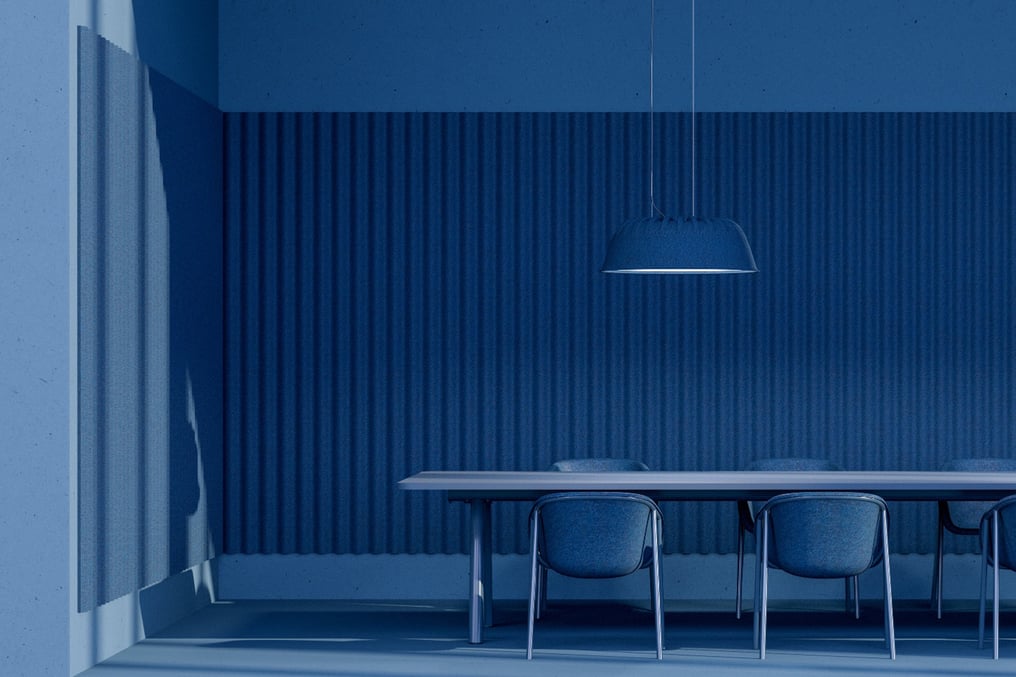Journal
Intentional Workplaces by De Vorm
As we think about the future of work, and the role of the office, several questions come to mind. Where do we prefer to work? How do we create more meaningful work experiences? What type of spaces do we need and what type of work do we perform there? In our vision, the answer to these questions lies in Intentional Workplaces. A concept to explore new possibilities for office work and the role offices play in our professional lives.
The Intentional Workplace
Even before the pandemic, we weren’t in the office 100% of the time. Research by Gensler shows that since 2016, the average U.S. employee spend only 81% of their time in the office. In 2019 innovative companies were spending more than one-third of their time working outside their primary office location. This trend gained momentum during the pandemic.
Now, most companies have some form of hybrid working in place. Working 5 days a week, from 9 to 5 in the same place, is rare for office workers. Employees now come to the physical workplace when it is needed or wanted. And when they come, they usually have a clear intention.
Because of these changing working habits, architects and designers need to focus on those needs by creating Intentional Workplaces, and enabling them through a physical space. An office should put people at the centre, by giving them a great environment to work in. Where they have the freedom to choose how and where to work. But also a place for social interaction and serendipitous meetings. Creating togetherness and connecting with the company culture.
 Being at the office can have a variety of reasons, such as:
Being at the office can have a variety of reasons, such as:
・ Creative brainstorming & ideation
・ Group work
・ Giving and receiving in-person feedback
・ Conceptual work that requires focus
・ Access to materials and equipment that isn’t available at home
Next to these more individual, human needs, a physical office space is also important for other reasons:
・ Build relationships
・ Company culture & identity
・ Togetherness
 Hanne Hallwaß from UNDPLUS on Intentional Workplaces in our interview:
Hanne Hallwaß from UNDPLUS on Intentional Workplaces in our interview:
“We really notice, from small to big companies, that they want to get their employees back in the office. Not because of control, but because they want to bring people together again. To have more contact between colleagues and build a missing bond between the teams.
But they need a new concept for working. More space is needed for shared desks, but also quiet spaces where you can have a call, or a one-on-one meeting. So it has become more convenient to develop these smaller, flexible spaces inside bigger offices.”
As a company, you should provide spaces for these specific needs and to build company culture. In other words, to create an Intentional Workplace. As there are different needs, The Intentional Workplace consists of several spaces. But most importantly, these spaces should reflect company culture.

Cultivating Company Culture
Just putting a pool table, ping-pong and breakout areas in an office, won’t create a playful, vibrant company culture. Because if nobody uses them, it only looks cool, but it is only a simple, performative fix. Too often, companies rely on shortcuts to provide what workers really want. Culture is something that can’t be forced, but it has to be cultivated.
The best examples of great workplace culture can be found in organizations that are willing to actually listen to their employees. So before you get started on creating intentional workplaces, ask employees what they want, require and what fits your company culture. As an owner, you might think people desire more social spaces, but instead your employees want more places for focused work, for instance. It should be an environment that enables people to get the most out of themselves.
In a way, workplaces are looking more and more like designs in hospitality. Like Todd Architects explains in this article: “We can sleep and eat at home, but we go to a hotel for an experience away from the norm. Covid-19 has proven that many of us can work from home, but it has also given us an appreciation for getting out of the house and pursuing novel experiences and interactions. By creating a workplace akin to the hospitality sector in look and feel, staff are more likely to perceive office-based activities in a positive light, in turn promoting creativity, collaboration and ultimately productivity.”
Interior architect Anne Asbrand from combine design also stresses the importance of having a communal area, preferably a big kitchen: “I think younger generations are more flexible in how and where they work. Nonetheless, it is still important to have a physical place where people can get together to brainstorm, exchange ideas and get social. And for that, it’s useful to be at the office on a regular basis. To get to know people and see how they work together. That is the only way to create a community feeling and strengthen the company culture. Also, working from home can get lonely, and it is harder to connect with your co-workers.
In our own Berlin office, we have a really big kitchen. Even on the busiest days, there is always room to meet and eat. To talk about work, but also private things, and maybe even become friends. I think the kitchen is the most underrated space in an office.”
How to design an Intentional Workplace
Of course, every client has different needs and wishes for their ultimate design. You can download our guide on designing Intentional Workplaces.


